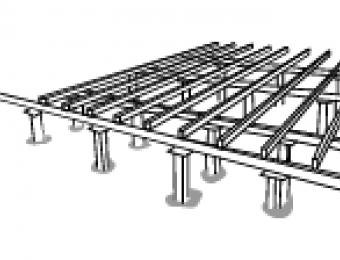How your floor absorbs and radiates heat is an important factor in how much energy you use to control the temperature of your house. A floor that is a good heat regulator will be energy and cost efficient, while a poor regulator can cost you a small fortune in additional heating over the long term.
How thermal mass works
To understand how a floor might perform in this regard, you will need to understand how thermal mass works. If you’ve ever leaned on a sun-warmed concrete wall, that’s thermal mass. It is the term given to describe how much thermal energy is required to heat a construction. Low thermal mass buildings heat up quickly, while high mass ones will take longer. On the flip side, a high thermal mass building such as brick or concrete will store the heat and radiate it back over a longer time.


Thermal mass and floors
The way thermal mass relates to floors is important because most times, the floor won’t be exposed to the most direct source of thermal energy – the sun. Floors can absorb warmth from a concrete slab’s sides being exposed to the sun, but this doesn’t translate very far. Most of the thermal energy will come from internal heating. Heat is attracted to cold, so will move to heat a floor with a higher thermal mass for longer but once the floor is sufficiently hot, the floor will hold onto that heat over a longer period of time. Planning windows so that they expose a high thermal mass floor to the sun during daylight hours will also help to lower your costs.
Thermal mass of different types of floors
High mass floors are very solid; polished concrete, tile and stone floors typically have a very high thermal mass and are backed by a thick concrete slab which only adds to the ratio. Lower thermal mass floors usually consist of only a few layers of a lighter or less dense material, such as wood floors on beams and joists, and are often found over stumps. Anyone who has tried to heat a large room with a concrete floor will attest to how long the heater has to burn before the chill is taken off the room, but the floor will retain that heat for much longer than a wood floor over stumps.
How insulation helps
Floor insulation changes the way floors behave by providing the benefit of heat reflection without adding significantly to the mass. To compare with the previous example, sufficient insulation under the wood floor would provide the key benefit of a low mass floor and faster heating, without suffering from its major drawback, rapid heat loss.





